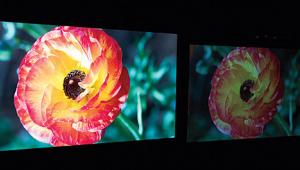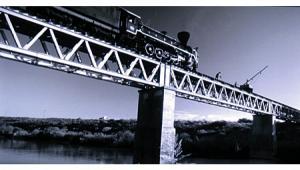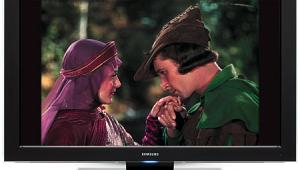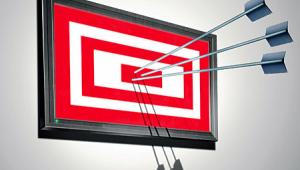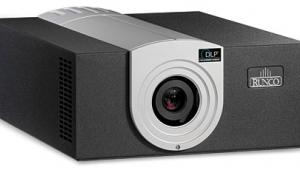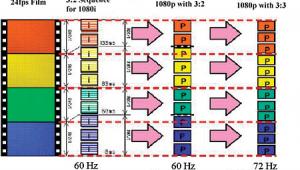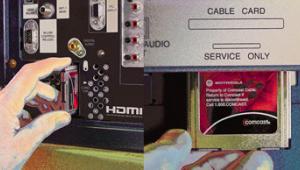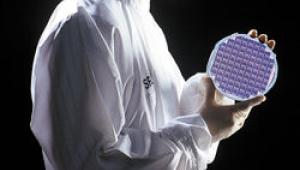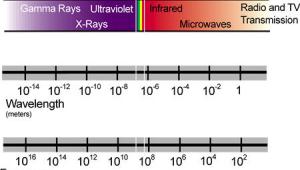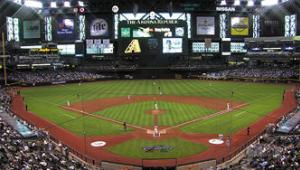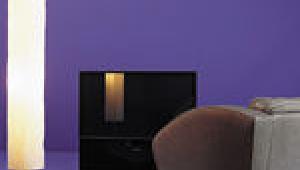Who Needs Light Bulbs? Part I
Bulbs are so 20th century. You can gussy them up, charge a bunch of money for them, even call them fancy names (lamps), but the fact of the matter is, they're still basically light bulbs. Almost all new RPTVs and front projectors use UHP (ultrahigh pressure) lamps to create light. These lamps are fairly efficient for the light they put out but are very hot, costly, and don't last very long. One new technology that's aiming to replace the UHP monopoly is LED, or light-emitting diode.
 Out With the Sort-Of Old
Out With the Sort-Of Old
UHP lamps, if you read the September 2005 GearWorks (also online, of course), work by creating an arc between two electrodes. This arc is very bright but so hot that it causes the electrodes to melt a little bit. Over time, they melt so much that the arc can't form anymore. At that point (after anywhere from 2,000 to 10,000 hours, depending on the lamp and usage), you need a new lamp. At $400 or more each, they certainly aren't cheap. Also, because they're so hot, they need elaborate and often noisy cooling solutions.
In With the Sort-Of New
LEDs have been around since the 1960s. Pretty much every consumer electronics product has at least one (the power light, for example), and every remote has at least one (the transmitter). To oversimplify how LEDs work, electrons (electricity) go in one side and pass between two layers of materials. (The materials vary depending on what color you want the LED to produce.) The electrons pass from the anode side to the cathode side, and, as they do, they release energy in the form of photons (light). Color is created not by filters, but by varying the light's actual wavelength by using different materials.

Red and green LEDs have been around for a while, but it wasn't until the end of the 1990s that blue LEDs became available. More recently, advances in efficiency have led to much greater light output and the ability to put everything on one chip. Luminus' Phlatlight technology (short for PHotonic LATtice) will be in Samsung's new LED RPTVs. One chip can produce all three colors, or a display can use a group of three chips, each one creating a different color.
There are many benefits to using LEDs as a light source. The first is nearly instant on/off control. No more waiting for the bulb to warm up or cool down. LEDs are also significantly cooler than UHP bulbs, so cooling solutions can be far less extensive (and noisy).
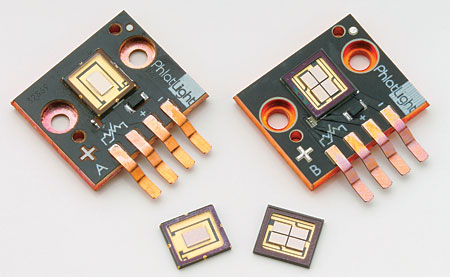
UHP lamps create white light, so, for those, you need the dreaded color wheel (or three filtered DLP or LCD chips) to create color. LEDs, on the other hand, don't need a color wheel; your display will have a specific LED for each color. This will decrease noise, as well. (That wheel is often very loud.) There will still be sequential color with single-chip DLPs, so there's still the chance of rainbows, but there are two reasons why they'll be much harder to see. The first is that the LEDs can switch between colors six times faster than a color wheel. Second, you can create the secondaries (yellow, cyan, magenta) in real time just by shining two of the LEDs at once. This also is true for white, but with all three LEDs on at the same time.
Of course, there are some possible downsides. Color accuracy could be subpar. Because LEDs can create colored light without filters, some manufacturers may choose to be cheap and not adjust the color points. This really isn't a technology issue, more a TV-design issue. As it stands with the Phlatlight system, you can adjust the color temperature and color intensity by varying each LED. The initial cost may be higher for LED sets, but, over time, without the repetitive cost of bulb replacement, LED sets will probably be cheaper. As more companies start using LEDs, the price for them will likely drop further.

So, why haven't you seen LED backlights until now? Well, the first reason is the aforementioned cost. It's more expensive to get LEDs to make the kind of light that UHPs do. Prices have only come down to reasonable levels fairly recently. Another is brightness: Getting LEDs bright enough to fill a big screen has only happened recently. Life span was also another concern, but now the word is that LED-based sets should have at least a 20,000-hour life span, and possibly up to 60,000 hours. LED-based DLP sets should be available pretty soon, so we'll see how well they do. It's certainly promising.
Next month, in the spectacular conclusion of our epic two-part series on new lighting methods for RPTVs, we'll take a look at one that uses—get this—lasers. Now, if that's not futuristic, I don't know what is.
- Log in or register to post comments


